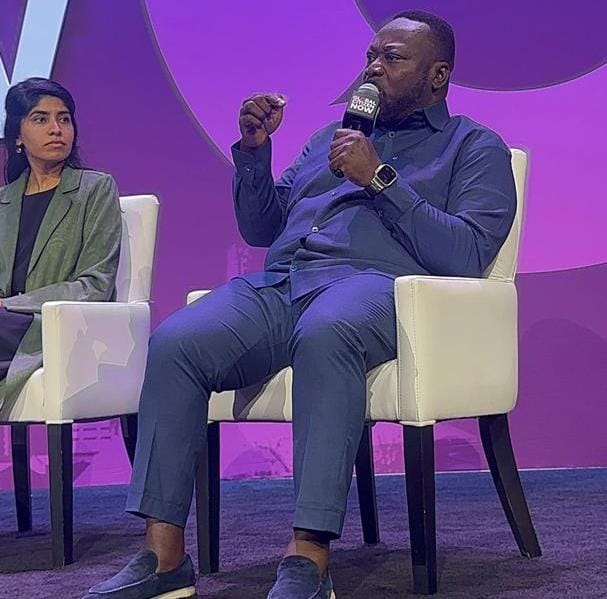From cathedral to culture: Rethinking Ghana's priorities at the heart of Accra
This move, launched under President John Dramani Mahama’s “24-Hour Economy” programme (SHOW24), probably represents a significant redirection of national priorities, from a highly symbolic religious structure to a more inclusive, economically driven cultural hub.
While this change has been welcomed by sections of the public and civil society, it also raises important questions about the motivations behind the project, the fate of the original cathedral vision and how the new plan will avoid the governance failures of the past.
The government’s decision to align the NCCC with the African Continental Free Trade Area (AfCFTA) reflects a strategic emphasis on cultural diplomacy and economic opportunity.
AfCFTA, headquartered in Accra, is Africa’s most ambitious integration effort in decades.
By creating a space that can host international exhibitions, film festivals, business conferences, and cultural events, Ghana positions itself as a continental hub for cultural exchange and economic and trade diplomacy.
This shift promises to attract global attention and stimulate job creation, tourism and growth in the creative industries.
Compared to the original National Cathedral project, which was estimated at over $400 million and offered limited practical utility.
The NCCC provides a more functional and inclusive vision for Ghana’s future.
It caters to a diverse population and aligns with national needs, especially in terms of economic recovery and youth unemployment. It transitions from symbolism to substance, reflecting a more pragmatic governance approach.
It is essential to recognise that the original vision of the National Cathedral was, at its core, a cultural project, albeit one deeply wrapped in religious symbolism.
The transition is not without complications.
The National Cathedral was more than a building; it was a religious project backed by a sitting President, designed by Sir David Adjaye, and supported by churches.
Key questions remain: Can any aspects of the Adjaye plan be repurposed to suit the new cultural vision or must a completely new design be commissioned?
Will churches that backed the project be consulted or compensated and on what grounds?
Though many saw their support as a spiritual offering, concerns over transparency and the use of funds persist.
Above all, clarity is needed on project timelines and how the transition will be managed to restore public trust.
This project presents a critical opportunity to rebuild public trust, but only if accountability and transparency are prioritised.
The original cathedral initiative was tainted by serious procurement breaches, with over $58 million in public funds spent without parliamentary approval or competitive tender processes.
Investigations by CHRAJ and the Special Prosecutor exposed glaring irregularities, yet there has been limited clarity on prosecutions or recovery of misused funds.
For the NCCC to succeed in policy and public perception, it must avoid these past mistakes.
The government must adopt a transparent, competitive procurement process, clearly disclose funding sources and subject the project to independent audits and parliamentary oversight.
Civil society and media must be empowered to monitor progress.
As importantly, there must be consequences for those responsible for financial mismanagement and corruption in the original cathedral project.
Without accountability for the past, the future risks being haunted by the same credibility deficit.
There are also concerns about whether the timelines laid out in the SHOW24 plan are feasible.
The programme outlines feasibility studies (Phase 1) between 2025 and 2026, with full commissioning (Phase 3) expected between 2028 and 2030.
While this sounds reasonable on paper, the history of the cathedral project itself cautions against over-optimism.
Major infrastructure projects in Ghana often face delays due to financing challenges, bureaucratic inefficiencies and procurement disputes.
Given that President Mahama has only one term left, ending in January 2029, it is uncertain whether the project will be completed within his tenure.
Given our history of abandoning projects initiated by previous governments, what would be the project's fate after his tenure?
This places additional pressure on his administration to fast-track feasibility, design and implementation phases, while maintaining rigorous transparency standards.
Rushing without accountability would risk repeating old mistakes, while delay could erode public confidence in the project’s viability.
Despite these complexities, the proposed transformation of the National Cathedral into NCCC is a step in the right direction. It suggests a growing willingness to reassess national priorities and respond to the population's evolving needs.
If appropriately managed, the NCCC could become a landmark of Ghana’s cultural and economic renewal, a space for creativity, learning, commerce and connection across the continent.
However, its success will depend on visionary planning, honest governance, inclusive engagement, and an unwavering commitment to public accountability.
The unfinished cathedral has long stood as a symbol of overreach and controversy.
It is now up to this government to ensure its replacement becomes a model of integrity, inclusivity and national purpose.
The writer is a political scientist.
You may also like...
Diddy's Legal Troubles & Racketeering Trial

Music mogul Sean 'Diddy' Combs was acquitted of sex trafficking and racketeering charges but convicted on transportation...
Thomas Partey Faces Rape & Sexual Assault Charges

Former Arsenal midfielder Thomas Partey has been formally charged with multiple counts of rape and sexual assault by UK ...
Nigeria Universities Changes Admission Policies

JAMB has clarified its admission policies, rectifying a student's status, reiterating the necessity of its Central Admis...
Ghana's Economic Reforms & Gold Sector Initiatives

Ghana is undertaking a comprehensive economic overhaul with President John Dramani Mahama's 24-Hour Economy and Accelera...
WAFCON 2024 African Women's Football Tournament

The 2024 Women's Africa Cup of Nations opened with thrilling matches, seeing Nigeria's Super Falcons secure a dominant 3...
Emergence & Dynamics of Nigeria's ADC Coalition

A new opposition coalition, led by the African Democratic Congress (ADC), is emerging to challenge President Bola Ahmed ...
Demise of Olubadan of Ibadanland
Oba Owolabi Olakulehin, the 43rd Olubadan of Ibadanland, has died at 90, concluding a life of distinguished service in t...
Death of Nigerian Goalkeeping Legend Peter Rufai

Nigerian football mourns the death of legendary Super Eagles goalkeeper Peter Rufai, who passed away at 61. Known as 'Do...



